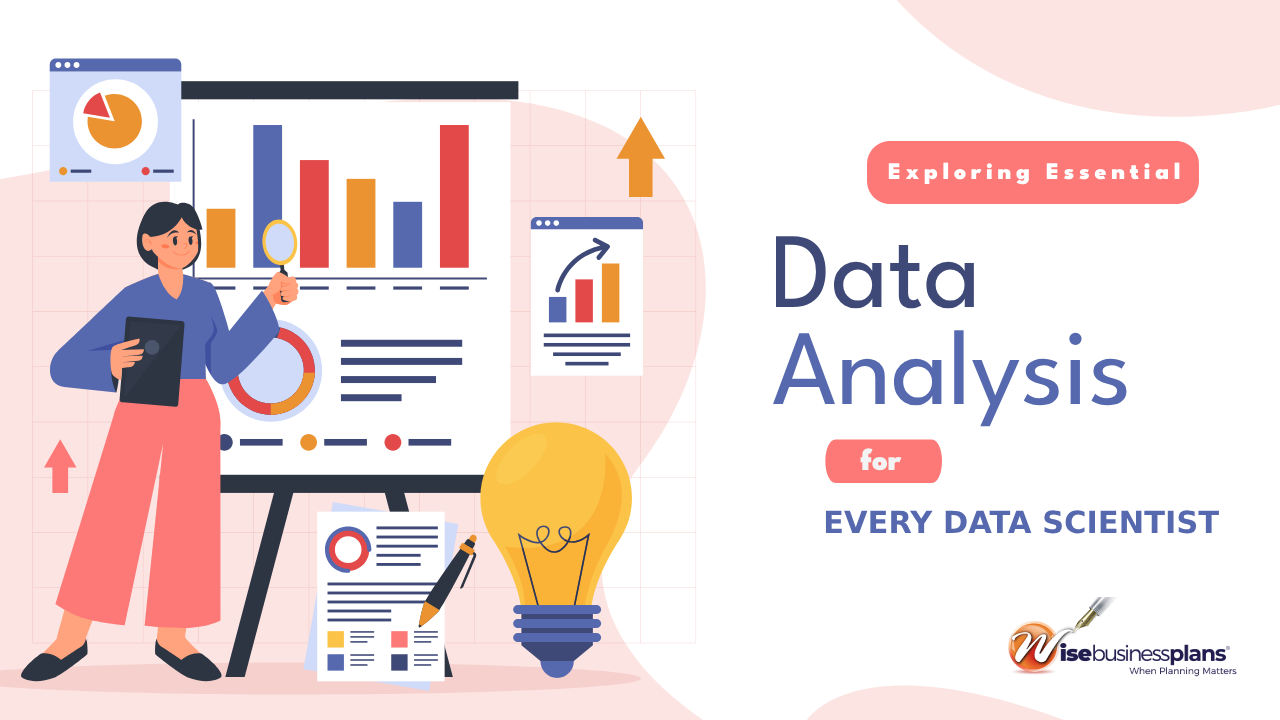Exploring Essential Data Analysis Tools for Every Data Scientist
In today’s data-driven world, the ability to analyze and derive insights from data is paramount. Data analysis tools play a crucial role in this process, empowering data scientists to extract valuable information from large and complex datasets. Use your data insights wisely with a growth plan from our business plan writing services. In this article, we’ll explore 10 essential data analysis tools that every data scientist should be familiar with.
Key Highlights
- Python (versatile), R (statistics), & SQL (databases) are key for data manipulation, analysis, & database management in data science.
- Tableau (drag-and-drop), Excel (familiar), & QlikView/Sense (interactive) create data visualizations for clear insights & reports.
- Jupyter Notebooks (code & narrative) & Apache Spark (big data) are open-source tools for data exploration, collaboration, & tackling massive datasets.

Python has emerged as one of the most popular programming languages for data analysis due to its simplicity, versatility, and extensive libraries. Pandas provides data structures and functions for manipulating and analyzing structured data, while NumPy offers support for numerical computing. SciPy complements these libraries with additional scientific and technical computing functions, making Python a powerhouse for data analysis tasks.
R is a programming language and software environment specifically designed for statistical computing and graphics. It offers a wide variety of statistical and graphical techniques, making it a preferred choice for data analysis in academia and industry alike. With its rich ecosystem of packages, R enables data scientists to perform advanced statistical analysis and visualization.
SQL is a domain-specific language used for managing and manipulating relational databases. It allows data scientists to query, update, and manage data stored in relational database management systems (RDBMS). Proficiency in SQL is essential for working with structured data and performing database operations efficiently.
Tableau is a powerful data visualization tool that enables users to create interactive and shareable dashboards, reports, and visualizations. With its intuitive drag-and-drop interface, Tableau makes it easy to explore and analyze data from various sources. It is widely used across industries for generating insights and communicating findings effectively.
Microsoft Excel is a ubiquitous spreadsheet application with built-in data analysis capabilities. Power Query allows users to discover, connect, and transform data from different sources, while Power Pivot enables data modeling and analysis using in-memory analytics. Excel remains a popular choice for quick ad-hoc analysis and data manipulation tasks.
MATLAB is a high-level programming language and interactive environment for numerical computation, visualization, and programming. It is widely used in engineering, science, and mathematics for data analysis and algorithm development. With its extensive libraries and tools, MATLAB facilitates complex mathematical and statistical analysis.
Jupyter Notebooks is an open-source web application that allows users to create and share documents containing live code, equations, visualizations, and narrative text. Supporting various programming languages such as Python, R, and Julia, Jupyter Notebooks provides an interactive environment for data exploration, analysis, and collaboration.
Apache Spark is an open-source distributed computing system designed for big data processing and analysis. It provides an interface for programming entire clusters with implicit data parallelism and fault tolerance. With its in-memory processing capabilities and rich set of libraries, Spark enables scalable and efficient data analysis on large datasets.
SAS is a software suite developed by SAS Institute for advanced analytics, multivariate analyses, business intelligence, data management, and predictive analytics. Widely used in industries such as healthcare, finance, and government, SAS offers a comprehensive set of tools for data analysis and modeling.

Looking for someone to write a Business Plan?
Hire our professional business plan writer
QlikView and Qlik Sense are business intelligence and data visualization platforms that enable users to create interactive dashboards and reports for data analysis. Leveraging associative data indexing and in-memory data processing capabilities, Qlik empowers users to explore and analyze data in real-time, driving informed decision-making.
Conclusion:
In conclusion, data analysis tools are indispensable for extracting insights and making informed decisions in today’s data-driven world. Whether you’re performing statistical analysis, data visualization, or big data processing, having a good grasp of these 10 essential tools can significantly enhance your capabilities as a data scientist. By leveraging the right tools and techniques, you can unlock the full potential of your data and drive impactful outcomes in your organization.

